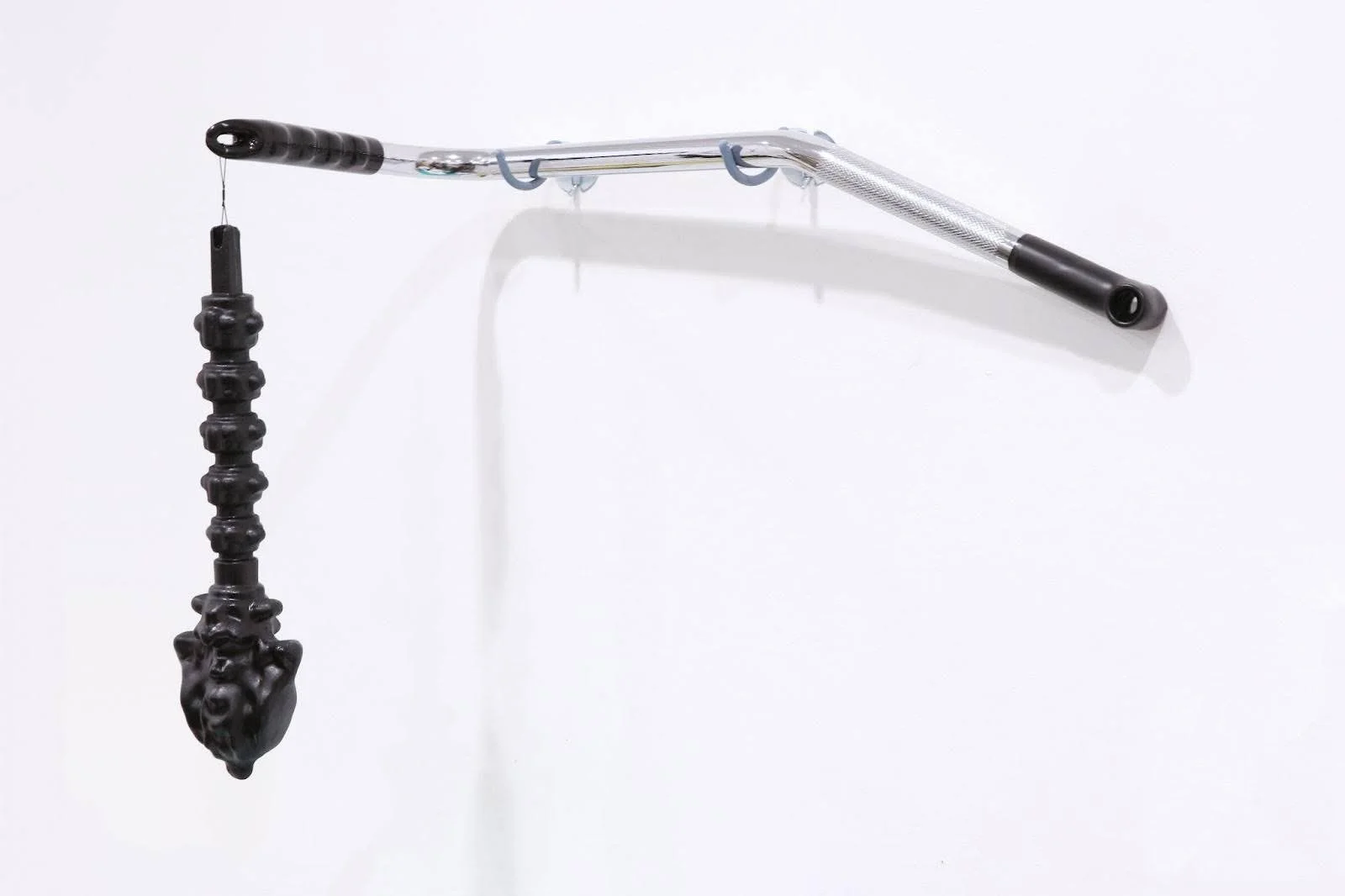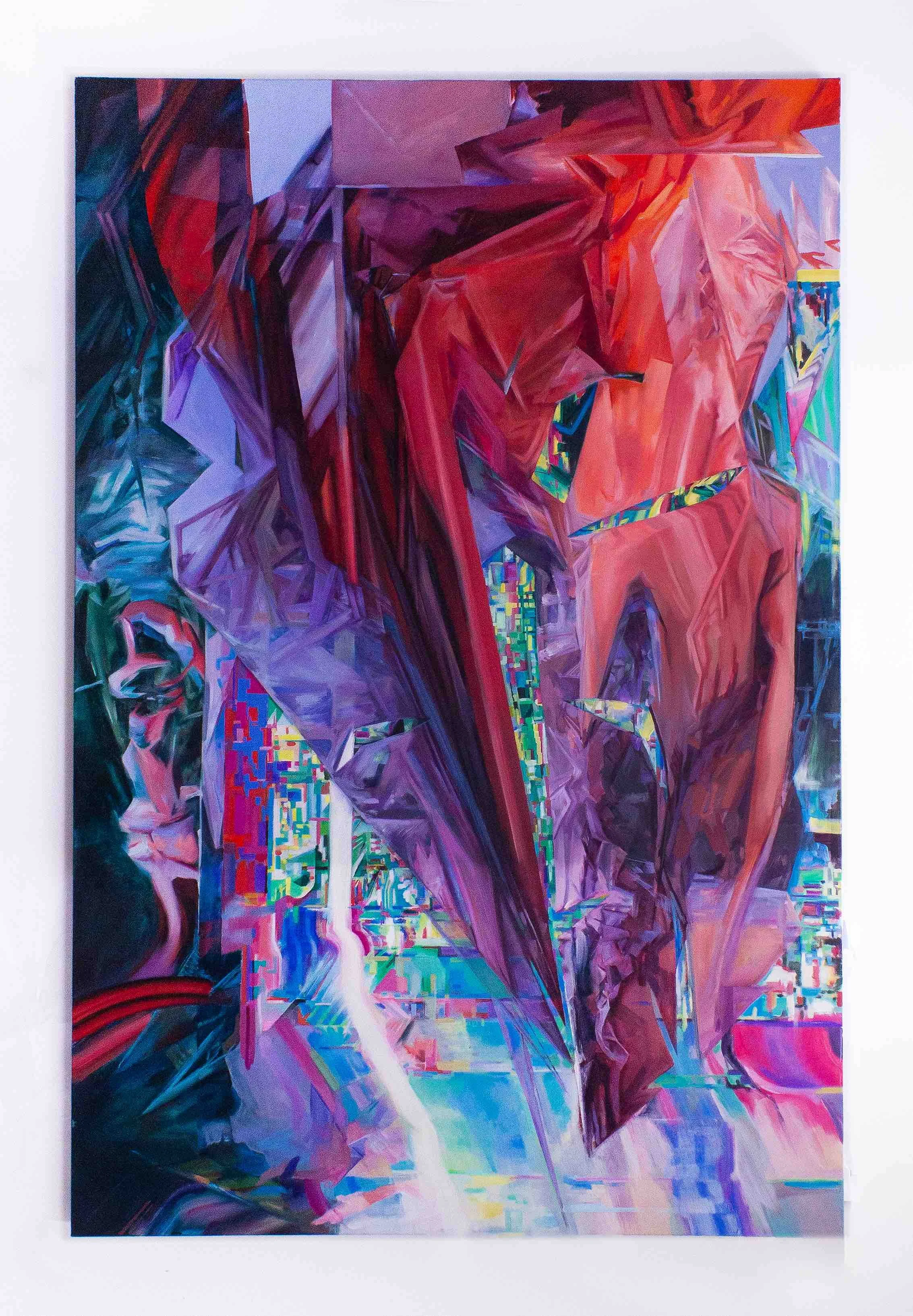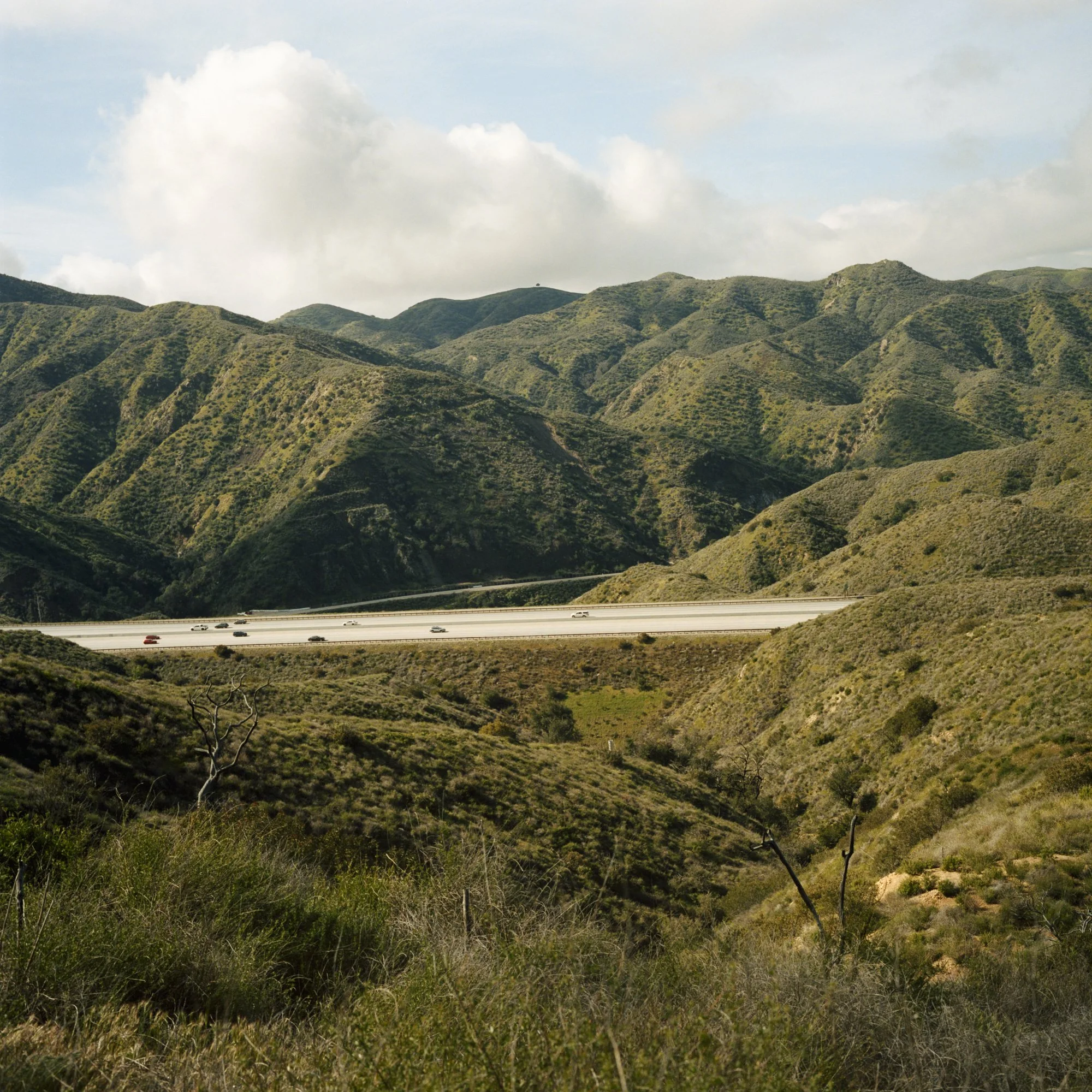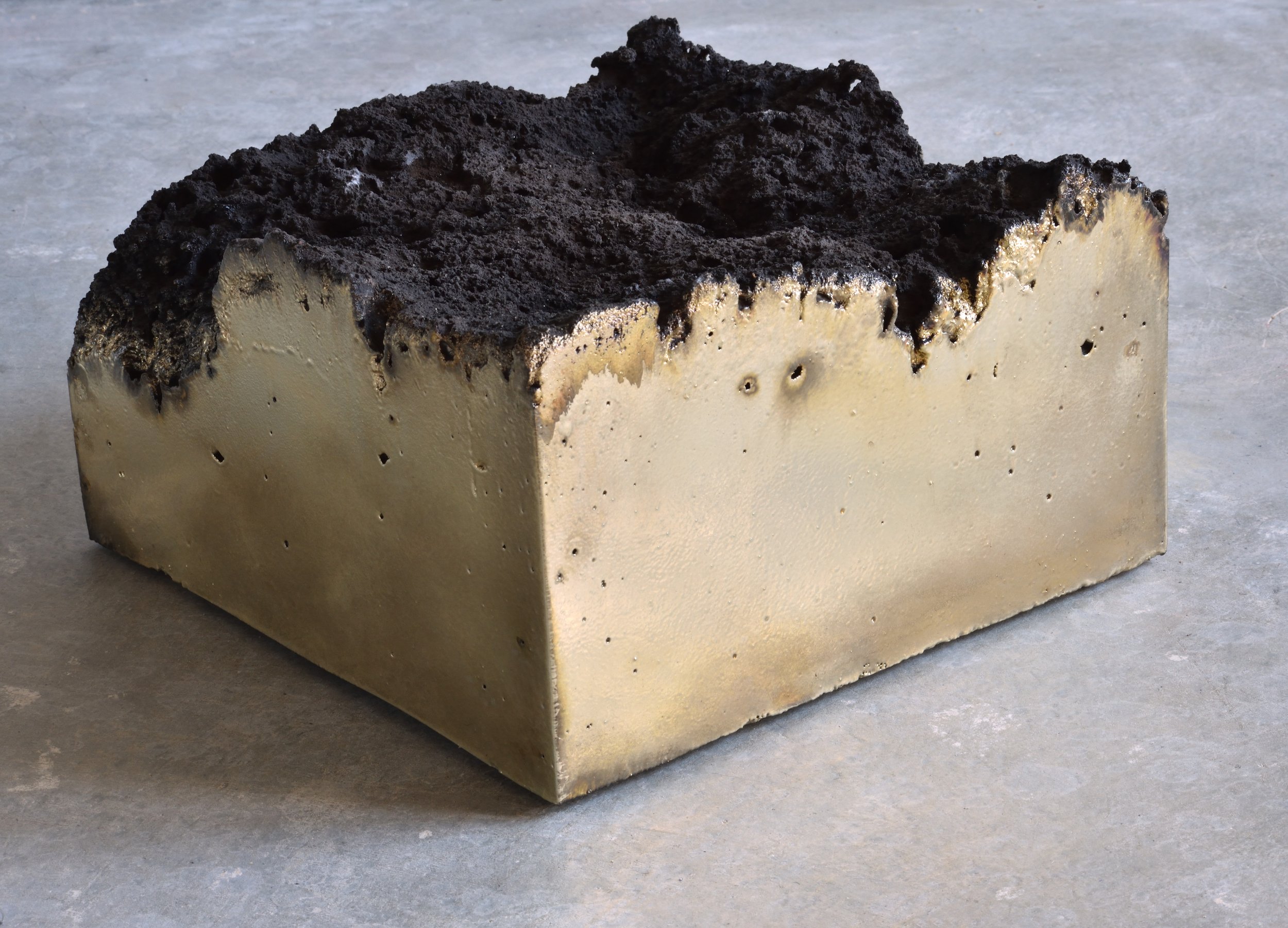Xixi Edelsbrunner
Grudge
October 25th - November 16th, 2025
Monte Vista Projects is pleased to present Grudge, an anti-cathartic solo exhibition by Xixi Edelsbrunner.
Care is over. Repair is over. I am raging a lot, tearfully, frightfully. I can’t articulate what I’m mad about. I’m furious at my ex-friends, my doctors, their front-desk people, the bureaucracy, the bots, doors, chairs, the pathetic sliver of space that naturally appears when people stand around and leave things about—I can’t fit through, but the human beings can. There seems to be nothing to do except put them in a trap.
Inspired by imaginary cripples such as John Kramer and Mr. Glass, Edelsbrunner produced a stifled and antagonistic assortment of tubes and plastics. A new series of sculptures incorporate an exercise machine’s chrome arms and casts of a Halloween skeleton’s spine, transformed into sensual weapon-toys in Edelsbrunner’s assemblages. Cast from the negative space of discarded consumer packaging and in the drab palette of suburban-office-park-cum-medicial-surplus-supply-factory, a series of intimately-scaled plastic works refuse neat legibility, insisting instead on the opacity of mass-produced negative space as subject. Spatially disruptive infrastructural tubes live in and descend from the ever-present and avoided “gallery ceiling.” They are in the way, manipulating movement and interrupting assumptions of free mobility for the able-bodied. To pass by, viewers meet a distorting mirror that acts as a trap and accusing eye.
The works hold a grudge, small and petty, enduring an accumulating inward pressure. It is architectural and stuck; unwilling to move and unable to defend its position; cold-rolled and always insulted. It holds on tight and forever.
Xixi Edelsbrunner (b. 1993) is a multimedia artist, and transplant to Los Angeles, California, where they live an abundantly domestic life. Their practice is sustained by an affinity for objects—particularly the generic, boring, and mass-produced. It has been said of Edelsbrunner that they have “a very strong super-ego” and “there is a reason [they] love Saw so much.” They are a member of Queer Spa Network, a social practice collective that organizes spa-themed public programming and care work.























